 'Jin' named the word of the year by cross-strait netizens
'Jin' named the word of the year by cross-strait netizens Chinese scientific expedition goes to build new Antarctica station
Chinese scientific expedition goes to build new Antarctica station
 Chinese naval escort fleet conducts replenishment in Indian Ocean
Chinese naval escort fleet conducts replenishment in Indian Ocean 17th joint patrol of Mekong River to start
17th joint patrol of Mekong River to start China's moon rover, lander photograph each other
China's moon rover, lander photograph each other Teaming up against polluters
Teaming up against polluters
MOST VOLATILE YEAR
Shen's caution does not come out of nowhere. Overseas trade has just gone through a most Mercurial year in two decades.
The increase during January to March was a stunning 13 percent, but dropped to under 5 percent in the second quarter. Foreign trade rose only 0.4 percent in May, and June saw the first decrease in 17 months.
Moderate growth in July and August was followed by another negative number in September, then a 5.6 percent rebound in October.
"The fluctuation comes from several sources, which include the uncertain recovery in global markets, and carry trades which greatly distort the customs figures," explained Xiao Yaofei, a professor with Guangdong University of Foreign Studies.
Shen Danyang believes that this new wave of increase is better grounded, as recoveries are seen across a range of industries, including labor intensive sectors such as bags, shoes and toys.
Analysts are still concerned that carry trades, a kind of cross-border interest rate arbitrage, are also behind the growth in November. The government and the trade companies are warned to look at the underlying reasons for the fluctuations.
Lu Zhengwei, chief economist of Industrial Bank, believes choppy, distorted trade figures are related to both the overvaluation of the yuan and high domestic interest rates
"They are the conditions which breed carry trades. When exchange rate volatility is small enough, hot money will flood into China via trade channels," Lu explained, "and these conditions still exist."
According to the Global Sources survey, 66 percent of respondents list "yuan appreciation" as their primary obstacle, replacing production and labor costs in the previous survey 6 months ago.
The yuan gained more than 2 percent against the greenback in 2013 alone, undermining export competitiveness, especially for small and middle sized suppliers.
The situation worsened in recent months, when the currencies in some emerging markets depreciated against the U.S. dollar, making Chinese products even more expensive. These developments add weight to the need for reform, including the internationalization of the yuan.
A central economic work conference in mid-December emphasized a push for market interest rate reform and reform of yuan exchange rate mechanism to increase efficiency.
Rising costs and price pressure from the buyers are concerns of over 60 percent of the companies, mainly from the coastal provinces of Guangdong, Zhejiang, Fujian and Jiangsu. About 64 percent of them did not think their revenue growth in the next half year would be over 20 percent.
Craig Pepples, president of Global Sources' corporate affairs, said rising prices are not just a result of high costs, but come from a shift from cheap to upscale production.
"Moving from being a source of inexpensive goods to a hub for top-quality products that offer good value for money is part of the evolution of China's export industry," said Pepples. "Upscale, and OBM and ODM production will secure China's place as an export powerhouse even as new low-cost manufacturing hubs emerge."
Haier, the country's largest exporter of home appliances, invested heavily in global marketing and new media promotions this year to contend with yuan appreciation and sluggish demand.
"It's a bad time for all home appliances makers worldwide, but I think we can maintain double digit growth," said Zhang Qingfu, sales director for the Middle East and African markets.


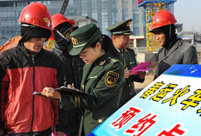 People prepare for upcoming 'Chunyun'
People prepare for upcoming 'Chunyun'  Highlights of Beijing int'l luxury show
Highlights of Beijing int'l luxury show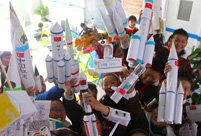 Record of Chinese expressions in 2013
Record of Chinese expressions in 2013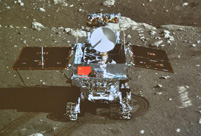 China's moon rover, lander photograph each other
China's moon rover, lander photograph each other 17th joint patrol of Mekong River to start
17th joint patrol of Mekong River to start Spring City Kunming witnesses snowfall
Spring City Kunming witnesses snowfall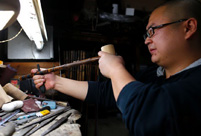 Heritage of Jinghu, arts of strings
Heritage of Jinghu, arts of strings Weekly Sports Photos
Weekly Sports Photos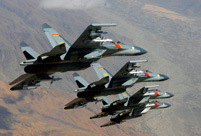 PLA elite units unveiled
PLA elite units unveiled  China's stealth fighters hold drill over plateau
China's stealth fighters hold drill over plateau Chinese navy hospital ship's mission
Chinese navy hospital ship's mission  "Free lunch" program initiated in NW China
"Free lunch" program initiated in NW China  Rime scenery in Mount Huangshan
Rime scenery in Mount Huangshan DPRK's Kaesong Industrial Complex
DPRK's Kaesong Industrial Complex 'Jin' named the word of the year
'Jin' named the word of the year Day|Week|Month